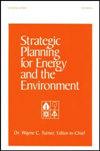Building Envelopes Toward Energy-Savings in Hot and Humid Climates: A Review
Q3 Environmental Science
Strategic Planning for Energy and the Environment
Pub Date : 2023-05-17
DOI:10.13052/spee1048-5236.4232
引用次数: 0
Abstract
Energy-efficient measures are being increasingly implemented in the building sector to reduce the increasing energy consumption with the growing population and the rapid development of urban building layouts. In hot and humid climates, energy-saving measures for the building envelope elements have attracted increasing interest in research and practice due to their effectiveness in upgrading the building energy performance by reducing the amount of heat gain and solar glare to the building’s indoor environments. Accordingly, as evidenced by our review of the literature, an increasing number of publications on energy-saving measures for the building envelope are being published in peer-reviewed articles. However, a few literature overviews covering all possible energy-saving measures of building envelope elements, which can provide insight into determining the value of their effective parameters to achieve the best performance and evaluate the feasibility of energy efficiency improvements. This paper attempts to fill that gap by reviewing recent advances in energy-saving measures for building envelope elements and comparing their various parameters to suggest the best design options. This study summarised that applying individual measures to a certain degree is straightforward energy-saving potential. Otherwise, high energy-saving levels must incorporate an optimum combination of many energy-saving measures and balance their conflicting influences on energy performance criteria. This study may be handy for stakeholders responsible for decision-making during the design of new or retrofitting existing buildings.湿热气候下建筑围护结构节能研究综述
随着人口的增长和城市建筑布局的快速发展,建筑部门正在越来越多地实施节能措施,以减少日益增加的能源消耗。在炎热潮湿的气候中,建筑围护结构元件的节能措施因其通过减少建筑物室内环境的热量获得和太阳眩光来有效地提高建筑能源性能而吸引了越来越多的研究和实践兴趣。因此,正如我们对文献的审查所证明的那样,越来越多的关于建筑围护结构节能措施的出版物发表在同行评审的文章中。然而,一些文献综述涵盖了建筑围护结构元件的所有可能的节能措施,可以深入了解确定其有效参数的值,以实现最佳性能,并评估提高能效的可行性。本文试图通过回顾建筑围护结构节能措施的最新进展,并比较其各种参数,提出最佳设计方案,来填补这一空白。这项研究总结说,在一定程度上采用个别措施是直接的节能潜力。否则,高节能水平必须包含许多节能措施的最佳组合,并平衡它们对能源性能标准的冲突影响。这项研究可能对负责新建筑或现有建筑改造设计决策的利益相关者很方便。
本文章由计算机程序翻译,如有差异,请以英文原文为准。
求助全文
约1分钟内获得全文
求助全文
来源期刊

Strategic Planning for Energy and the Environment
Environmental Science-Environmental Science (all)
CiteScore
1.50
自引率
0.00%
发文量
25
 求助内容:
求助内容: 应助结果提醒方式:
应助结果提醒方式:


